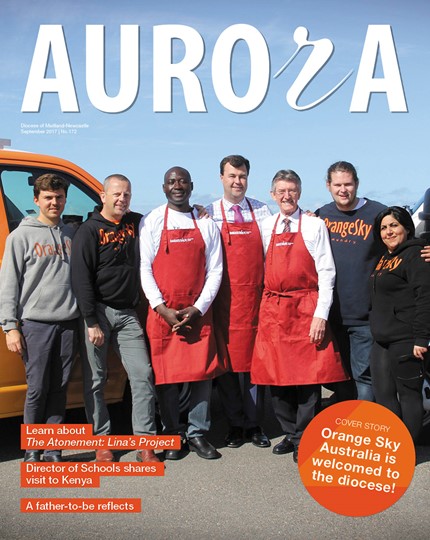However, since Pope Paul VI lifted the ban in 1963, cremation has become an increasingly popular option among Catholics.
Such a decision requires an important conversation, or conversations, and although some may find this topic uncomfortable, it could be seen as a kindness to pass on final wishes to loved ones − so the dinner table may not be a bad place to initiate these conversations.
Following the example of Christ’s burial, the early Christian church rejected the practice of cremation, believing that the body was to remain intact for resurrection. This practice continued in Christian-ruled countries for over 1500 years.
During that time, cremation was strongly opposed by Christians, as early pagan cremations were seen as a denial of Christ’s resurrection. In 789, to ensure the dead were buried, Charles the Great, King of the Franks, went so far as to create a law punishing the act of cremation by death.
In 1870, following the creation of the first modern cremation chamber in Italy, the popularity of cremation began to rise. In 1886, the Catholic Church officially banned cremations.
Since 1963, the Vatican has permitted cremation, but only if that choice is not a reflection of doubt or disbelief of Catholic teachings surrounding death, resurrection and eternal life. The Church also gives specific instruction surrounding the treatment of the remains of one who has died. As a dwelling place of the Holy Spirit, a person’s remains must be treated with respect, placed in a worthy container and then buried or placed in a columbarium. The practice of scattering remains or keeping remains at home is not consistent with the Church’s belief that the body must always be treated with respect.
These new rules, along with the rising costs of traditional burial services and diminishing burial grounds, have in turn led to an increase in cremations and the erection of columbaria across the Diocese of Maitland-Newcastle. A columbarium generally consists of an arrangement of niches in a mausoleum or a wall, into which an urn or other worthy vessel containing remains is placed as an enduring memorial to a loved one. The openings are covered with an inscribed plaque that acts as a memorial for the deceased and an attractive, practical alternative to burial in a cemetery.
“The building of columbaria on church grounds has put cremation in front of people’s faces,” says Diocesan Co-ordinator of Liturgy and Adult Faith Formation, Sr Louise Gannon rsj, who is currently exploring the Order of Christian Funerals through Stepping Stones, a diocesan formation program for parishioners who assist families in preparing Catholic funerals.
“In my experience, parishioners across the diocese seem to be very open to cremation and having their ashes in a columbarium,” says Louise.
“Visiting the remains of a loved one in a columbarium at the parish church can be easier for people and they can be sure that it will be well maintained. This care of the columbarium is an extension of the Church’s respect for the body of the deceased which was once the dwelling place of God. Like all burial places, columbaria remind us to pray for the dead and help us to keep in mind our belief in the resurrection. They become sacred places where people pause to reflect, to remember, to pray and to be renewed in hope.”
Many churches now have a columbarium within their grounds. The latest columbarium is the newly-developed Sacred Heart Columbarium, in the grounds of the cathedral, which opened in November 2015. The dominant sculptural image of the risen Christ captures the foundational belief of Christianity.
“From what I have observed, one of the biggest benefits of choosing a niche in a columbarium is the creation of an intimate connection between the living and the dead,” says the Dean of the Cathedral, Father Andrew Doohan.
“I often see people wander through the columbarium after Mass and visit their families,” says Andrew.
“The choice of burial or cremation is a personal one, but I have definitely seen how cremation can help the grieving process and allow it to unfold at a more natural pace.
“As there is a gap in time (usually a couple of weeks), between cremation and interment (the placing of the urn into the niche), this time can help people to deal with their grief.”
Cremation is a popular option in Newcastle’s Sugarloaf Parish.
“We estimate two-thirds of our parishioners tend to be cremated and believe the ones who are buried are the older ones who wish to be buried with their deceased partners,” says Sugarloaf Parish Secretary, Mel McNamara.
“Having our own columbarium at Holy Cross Church, Glendale, also has a lot to do with their decision, as people like the idea of being ‘buried’ on church grounds,” says Mel.
In Krambach, two hours north of Glendale in the Manning Region, the statistics on burial versus cremation are slightly different.
“St Bernadette's Catholic Church Krambach does not have a columbarium; however, Krambach Cemetery has one,” says honorary secretary of Krambach Parish, Helen Legg.
“In the 28 years I have lived in Krambach, I have only known of one cremation, so the percentage is very low in this particular part of the Manning Valley,” says Helen.
“No matter what you choose [cremation or burial], the most important thing is to ensure remains are respected,” says Andrew Doohan.
“The final words of committal are largely the same whether your body is buried or you are cremated so at the end of the day, the choice is yours,” says Andrew.
Perhaps the season of Easter is the perfect time to reflect on these important decisions, in the light of the resurrection of Christ and the promise of everlasting life?
To contact your local Catholic parish regarding these issues, please visit www.mn.catholic.org.au/parishes-priests/parishes. See also www.mn.catholic.org.au/church-community/change-loss-grief.























































































